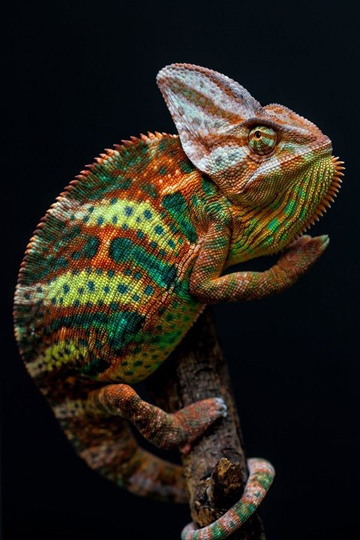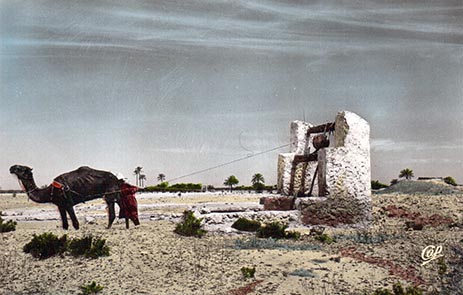A tribute to even more camels of old Aden …



to be continued… for #5, click here.

[Note: the following list of items for light camping in Arabia is provided by G. Wyman Bury for the early part of the 20th century.]
CAMP EQUIPMENT
Try to do without a tent. Arabs hate pitching tents after a long day’s march, and seldom pitch them well. They draw fire and afford no protection, while preventing your own observation; they also betray the site of your camp to bad characters and casual callers on the look out for supper.
BEDDING
Avoid Wolseley valises or anything with pleats and folds, which become the permanent abiding places of parasitic insects.
‘Blankets.’ One each for the men. A few extra for convalescents or invalided men. Two for yourself.
‘Pillows.’ Carry your spare clothes in a green canvas sack. Continue reading Tabsir Redux: Traveling Light in Arabia

No, this is not about politics, but the real thing. The Yemen chameleon, which is quite colorful, is Chamaeleo calyptratus. Enjoy the pictures.

ILE de DJERBA: Atelier du Potier de Guallala; Cie des Arts Photomécaniques, 44, r. Letellier, Paris-15
Two postcards from the 1950s.

ILE de DJERBA: Le Puits Djerbien et son Chameau;Cie des Arts Photomécaniques, 44, r. Letellier, Paris-15

The photographs here were taken of camels and people in Libya around 1957 by Dr. Virgil Clift.



Above and below are two scenes in Tripoli, Libya from the 1950s, when it was still a kingdom. Both are from Christmas and New Years greeting cards with the greeting in English.
 Photo by Jenah in Tripoli; printed in Italy
Photo by Jenah in Tripoli; printed in Italy

One of the most entertaining Arabic compendia on animal life, taken in the loose sense of the term for things that breathe or are thought to breathe, is the Hayât al-Hayawân (Life of Animals) of the Egyptian savant Kamâl al-Dîn Muhammad ibn Mûsâ al-Damîrî. Writing a century before Columbus discovered America, al-Damiri spins stories about animals with a variety of folklore about uses of animal products and parts. A scientist would no doubt shudder at the magical and literary focus of the text, only occasionally finding description useful today. A partial English translation was made by a British officer, Lieutenant-Colonel Jayakar, and published in two volumes in 1906 and 1908 in India. Unfortunately, this text is virtually inaccessible. I have looked at two copies, one in the New York Public Library and the other at the Library of Congress, and only with trepidation have I turned the fragile pages in this poorly bound volume. So far there is no digital version, which is a shame, since it is a delight to read.
Our author was a prolific copyist, quoting from over 800 other authors and providing a thousand entries, some simply an animal’s name and its more common synonym. Ironically, Jayakar’s Victorian sensitivity makes the translation as much an oddity as the primary work. Continue reading Tabsir Redux: Animal House in the 15th Century: Part 1